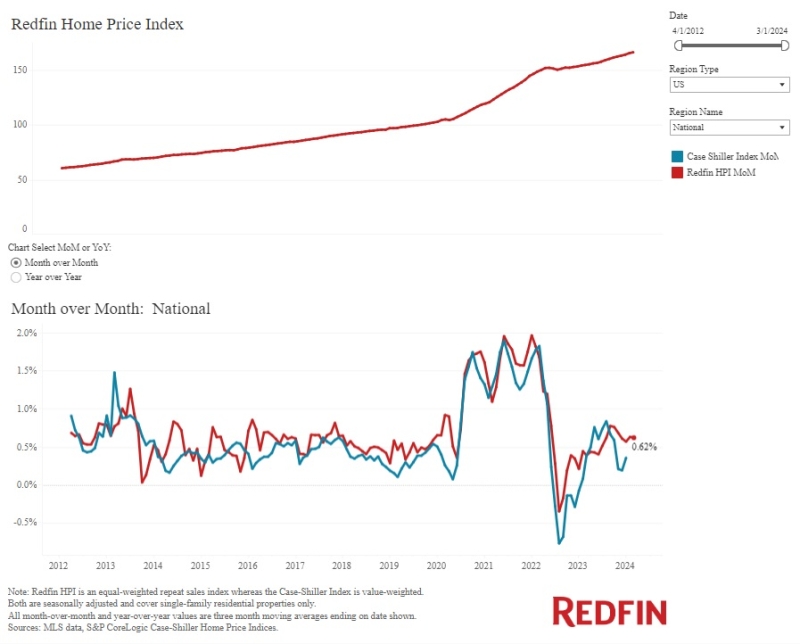Advertisement
Long-term rates slip on weak economic news: Short-term rates pick up on hints of the end to rate cuts
FDIC Chair Sheila Bair discusses credit crunch at the Brookings Institution ForumMortgagePress.comFDIC, Sheila Bair, credit, Brookings Institution, The Great Credit Squeeze: How it Happened, How to Prevent Another
The following are remarks delivered by Sheila C. Bair, Chairman,
Federal Deposit Insurance Corporation, before the Brookings
Institution Forum, The Great Credit Squeeze: How it Happened, How
to Prevent Another on May 16 in Washington, D.C.
Good morning and thank you for inviting me to speak.
Let me first say that this new study by Martin Bailey, Douglas
Elmendorf, and Bob Litan comes at the right time.
It gives a comprehensive overview of how we got to where we are
and covers the key issues policymakers must deal with to fix a
broken mortgage market and ultimately stabilize housing prices.
Importantly, it connects the dots between some of the seemingly
disparate financial developments of the past year. Among these is
the direct connection between protecting consumers and safe and
sound lending.
It's one of the best volumes I've seen since the one written
last year by the late Ned Gramlich on subprime lending.
As a former academic, I can appreciate all the time and energy
that went into it.
Housing crisis
Without a doubt, we have some significant challenges ahead of us.
And while some credit markets may be stabilizing, families,
communities, and the economy continue to suffer.
Frankly, things may get worse before they get better.
As regulators, we continue to see a lot of distress out
there.
Foreclosures keep rising as mortgages reset to higher rates,
home prices keep sinking, and millions of families continue to
struggle with unaffordable mortgages.
I can sympathize with these families.
I've seen hundreds and hundreds of ordinary people at
foreclosure workshops desperately looking for ways to keep their
homes.
And all of us can see the strain on state and local government
budgets and the impact on the banking and financial systems.
And there is more uncertainty ahead.
Data show there could be a second wave of the more traditional
credit stress you see in an economic slowdown.
Delinquencies are rising for other types of credit, most notably
for construction and development lending, but also for commercial
loans and consumer debt.
The slowdown we've seen in the U.S. economy since late last year
appears to be directly linked to the housing crisis and the
self-reinforcing cycle of defaults and foreclosures, putting more
downward pressure on the housing market and leading to yet more
defaults and foreclosures.
This is why regulators and policymakers continue to focus on the
housing market.
We need to find better ways to help struggling homeowners.
Case for greater government action
Over the past year, federal and state governments, and consumer
groups have worked with some success to encourage the industry to
modify loans.
But it's just not happening fast enough. Given the scale of the
problem, this cannot go on loan-by-loan as it has.
Solutions must be simple and practical, and quick to implement.
And they must be designed to result in limited or no cost to
taxpayers.
Congress and the White House are working on proposals that would
expand the role of the Federal Housing Administration (which
insures mortgages).
These are laudable efforts. They will help certain
borrowers.
But the FHA approach has its limitations. And new refinancing
options may take more time than we have. We need something that is
more immediate.
Homeownership preservation loans
I think the next line of attack should be using low-cost
government loans to help borrowers pay down unaffordable
mortgages.
We need to take a systematic approach that pays down enough of
these mortgages to make them affordable.
And it can be done at zero cost to taxpayers.
The FDIC is calling for up to $50 billion in new government
loans that would pay down a portion of the value of over a million
existing loans. (The Treasury would sell debt to fund the
plan.)
We're calling these new government loans Home Ownership
Preservation Loans - HOP loans for short.
Eligible borrowers could get a HOP loan to pay off up to 20
percent of their mortgage.
Mortgage holders would get the cash. As their part of the deal,
they would restructure the remaining 80 percent into fixed rate,
affordable payments. And they would agree to pay the government's
interest for the first five years.
That way, the HOP loans would be interest-free to the borrower
for the first five years.
After that, borrowers would begin repaying them at fixed
Treasury rates.
This would give borrowers a breather, and dramatically reduce
the chance of foreclosures.
As another part of the deal, the mortgage holders would agree
that the government would be paid first after any sale or
refinancing of the house.
As a result, taxpayers would be protected from any losses, even
if the borrower cannot repay the mortgage for any reason.
The plan would leverage the government's lower borrowing costs
to significantly reduce foreclosures with no expansion of
contingent liabilities and no net exposure to taxpayers.
The HOP loan program has a number of major advantages.
First, it's not a bailout. (That's a very big plus.)
Second, it would help stabilize a huge number of high-cost
mortgages, (which would be good for credit markets).
And it would also keep people in their homes, and making their
payments (which would slow the decline in home prices).
HOP loans would essentially give borrowers breathing room by
reducing their debt burden to a more manageable level.
And they would focus on homeowners who want to stick it out and
stay in their homes long-term.
Let me explain how HOP loans would work with a brief
example.
Loan Restructuring Example
For a borrower with a $200,000 mortgage in this example, the HOP
loan program would slash the current payment by about $500 to
$1,200 a month. (That's a 30 percent reduction.)
After five-years, when it's time to repay the Treasury, the HOP
loan payment plus the regular mortgage payment would push the
monthly total to about $1,400 a month.
That's still $300 less a month than the original payment.
And it's now five years down the road, giving borrowers time to
stabilize their finances and to rebuild some home equity.
There are other advantages.
The HOP program focuses on making unaffordable mortgages
affordable. And it has incentives for mortgage investors to qualify
borrowers who have a good chance of paying-off a restructured loan
over the long term.
It would complement the current FHA proposals now before
Congress, which may be most effective for people who are deeply
underwater with mortgages worth much more than their homes.
It also works within existing securitization contracts, avoiding
costly legal disputes.
Unlike any other current proposal there would be no need to
negotiate with the owners of second-liens, such as a home equity
loan.
And it can be implemented quickly because it's administratively
simple.
In most cases, eligibility can be determined with information
readily available from existing records.
No property assessments are required.
So, what about the naysayers?
No matter your political stripes or economic interests,
foreclosures, especially preventable ones, are to be avoided.
They cost lenders and borrowers a lot of money.
A modified, performing loan is almost always of significantly
greater value to mortgage investors than a foreclosed home.
As for the taxpayer, as I said, this is no bailout at taxpayer
expense. The HOP loan program is designed to result in no cost to
the government.
The loans and their financing costs would be fully repaid.
What about the speculators?
I was at a foreclosure prevention meeting in Los Angeles a few
weeks ago.
The place was filled with hundreds of families wanting to fix
their mortgages, with hundreds more lined up around the block.
I saw a lot of anxious, terrified faces.
But I didn't see any loan flippers or condo speculators.
Yes, there are borrowers out there who knowingly overleveraged,
hoping to make a quick profit as home prices rose.
But there are also many people who were the unknowing subjects
of misleading marketing and inexcusably lax underwriting.
All they wanted was to live in a home of their own. What they
got was a mortgage they couldn't repay.
What is accomplished when these good faith borrowers are
forced into foreclosure?
Another empty house on the market.
Another blight on a neighborhood.
Another hit to surrounding property values.
More erosion of local tax bases.
These foreclosures are hurting us all.
Is the HOP loan program the Holy Grail?
No. But it could help break the logjam.
Too many unaffordable mortgages are causing a never-ending
cycle, a whirlpool of falling house prices and limited refinancing
options that contribute to more defaults, foreclosures and the
ballooning of the housing stock.
And the only way to break this perilous cycle is by a wholesale
restructuring of these unaffordable mortgages.
Conclusion
I think it's time we come to grips with the need for more
pro-active intervention. And we need to act soon.
The housing crisis is now a national problem that requires a
national solution. It's no longer confined to states that once had
go-go real estate markets.
Creating additional tools to help borrowers that are cost
neutral and are systematically applied makes too much sense to not
act upon.
The FDIC has dealt with this kind of crisis before.
Remember the S&L disaster of the 1980s and 1990s?
Fortunately, we're in a much stronger position today. Banks are
healthy, and we want them to stay that way.
But we haven't forgotten the lesson. Not by a long shot.
We learned the hard way that early intervention always costs
less, and is always better than a policy of after-the-fact
clean-up.
I hope that is the path we follow.
And I urge all of you here today to climb on board, help us make
the right policy choices, and help restore the American
promise.
Thank you very much.
About the author





